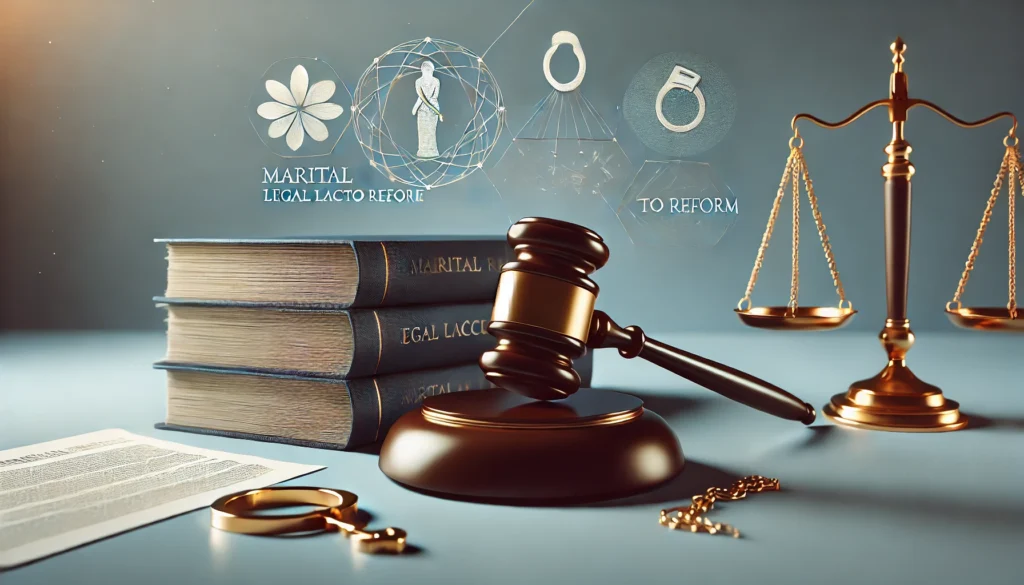Published On: 22nd November, 2024
Authored By: Anamin Ansar
Kristu Jayanti College Of Law
Introduction
In India, the death penalty remains a highly contentious legal issue, commonly referred to as capital punishment. The debate surrounding the death penalty encompasses social, legal, and moral dimensions, considering the diverse socio-political landscape of the nation. This article provides a comprehensive analysis of the historical context, ongoing discussions, judicial practices, and potential consequences of the death penalty in India.
In India, the death penalty has a rich historical background, originating from colonial rule and ancient religious texts. Manusmriti and other ancient scriptures, which prescribe severe penalties for various offenses, are the source of capital punishment. The Indian Penal Code (IPC), enacted in 1860, served as the foundation for the death penalty during British colonial rule. It allowed for the commission of specific crimes, such as terrorism, treason, and murder.
Historical impact:
Reflecting a colonial ideology that sought to maintain order through oppressive measures, the IPC was established to exert strict control over a diverse population. Despite the IPC still being in effect, there has been a significant shift in the way people talk about its provisions, especially when it comes to the death penalty.
Post-independence era:
The death penalty has been a part of Indian law since the country gained independence. After deliberating whether to remove it, the constituent assembly chose to retain it in the IPC, convinced that it could effectively prevent the most severe offenses. Nevertheless, the practice of capital punishment has faced scrutiny and undergone modifications over time, as societal values and human rights considerations have evolved.
Judicial trends:
Important judgments
The history of capital punishment in India has been influenced by a number of landmark Supreme Court decisions. In addition to debating the legitimacy of the death penalty, these cases emphasized the need for judicial discretion and the humane treatment of criminals. Notable examples include:
State of U.P. v. Rajendra Prasad (1979): This decision established the rule that the death sentence should be imposed only in the “rarest or rarest” circumstances. The Supreme Court recognized that the irreversible nature of the death penalty called for prudence in its application and pointed to the need for stricter enforcement of the law.
Bachan Singh v. State of Punjab (1980): In this decision, the Supreme Court reiterated the “rarest of the rare” doctrine and upheld the legitimacy of the death penalty. The court emphasized the importance of proportionality and consideration of the circumstances of the offense and the offence.
Machhi Singh v. State of Punjab (1983): This decision provided guidelines for judges to follow in deciding whether the death penalty is justified and further clarified the “rarest of the rare” doctrine. The Supreme Court emphasized the necessity of a thorough analysis of all relevant circumstances, focusing on the nature of the crime and its impact on society.
Babu v. State of Kerala (2015): The Supreme Court overturned the death sentence and emphasized that mitigating factors, including the offender’s background and mental state, should be taken into account. This decision reaffirmed the principles established in previous cases and emphasized the court’s commitment to justice.
Shatrughan Chauhan v. Union of India (2014): In this landmark case, the Supreme Court dealt with protracted delays in the execution of death row inmates. The court emphasized the psychological effects of prolonged detention on death row by ruling that such delays constitute cruel treatment and may be grounds for commutation of the death penalty.
Judicial activism When it comes to the death penalty, the Indian judiciary has shown a great deal of activism. Courts have often actively addressed concerns about the human rights impact of the death penalty. This led to a more nuanced strategy emphasizing the rights of the accused and the principles of natural justice.
Current debate:
The debate on the death penalty in India revolves around several fundamental questions, each of which reflects broader societal concerns and values. ### Deterrence versus retaliation Because the threat of death can deter would-be criminals from committing serious crimes, proponents of the death penalty argue that it acts as a deterrent to heinous crimes. They often defend the death penalty by pointing to the heinousness of certain acts, such as murder and terrorism.
However, critics argue that the idea that the death penalty deters crime is not sufficiently supported by actual data. According to studies, states that use the death penalty do not see a noticeable drop in crime compared to those that do not. The retributive nature of the death penalty calls into question the legitimacy of the state’s role in enforcing the penalty. Critics argue that society’s goal should be rehabilitation, not retaliation. ### Socioeconomic differences Concerns are growing about how marginalized populations are disproportionately affected by the death penalty. People from poorer socioeconomic backgrounds are more likely to be sentenced to death, according to research, raising concerns about justice and fairness in the legal system. Due to the inherent bias of the legal system, disadvantaged groups often receive unequal representation and outcomes.
Role of caste and religion:
The death penalty also touches on concerns about discrimination in the context of India’s caste structure and religious diversity. As a result of structural biases in the legal system and socio-political environment, there is evidence that people from disadvantaged castes and specific religious backgrounds may be more susceptible to the death penalty. This raises serious questions of due process and the potential for legal abuse.
International Trends:
There has been a discernible movement to abolish the death penalty on a global scale. Citing human rights concerns and a dedication to humane treatment, several European countries, including the United Kingdom, Canada, and many others, have abolished the death penalty. Resolutions advocating for a moratorium on the death sentence have also been enacted by the UN General Assembly, which encourages member nations to reevaluate its application.
Recent Legislative Developments:
In recent years, there have been attempts to expand the scope of offenses punishable by death. Legislative proposals have sought to include new categories of crimes, raising concerns about the potential for misuse and arbitrary application. Critics argue that broadening the definition of capital offenses could lead to more frequent imposition of the death penalty, undermining the principles established by the judiciary.
The Role of the Executive:
The executive also plays a crucial role in the application of capital punishment in India. Governors have the power to grant clemency to death row inmates under Article 161 of the Constitution. However, instances of commutation or pardon are relatively rare, and there is often public and political pressure against such actions. This dynamic creates an environment where the executive may be reluctant to intervene, even in cases that warrant clemency.
The Role of Public Opinion:
Public opinion significantly influences the death penalty debate in India. High-profile cases, particularly those involving gruesome crimes, often evoke strong emotions and calls for retribution. The media plays a critical role in shaping public discourse, sometimes amplifying demands for harsher penalties and fueling a culture of retribution.
However, there is also a growing movement advocating for the abolition of the death penalty, with organizations and activists working to raise awareness about its human rights implications. This duality in public sentiment reflects the complex nature of the issue and the challenges faced by advocates for reform.
International Human Rights Perspectives:
International human rights organizations, including Amnesty International and Human Rights Watch, have consistently criticized the death penalty as a violation of fundamental human rights. They argue that capital punishment is inhumane and ineffective, advocating for its global abolition.
The UN’s Stance
The UN has taken a strong stand against the death sentence, advocating for a global moratorium and its elimination. Citing the death penalty’s inconsistency with the right to life and the ban on harsh, inhuman, or degrading treatment, the UN Human Rights Committee has called on nations to abolish it. India’s continued use of the death penalty puts it at odds with the global human rights agenda, which has led to calls for reform from a number of sources. Proponents contend that India’s reputation on human rights concerns would increase if its laws were in line with international norms.
Potential for Reform:
There is a chance for significant reform in the continuing discussion about the death penalty. Comprehensive examinations of capital punishment laws that look at the socioeconomic and psychological aspects of the problem could be taken into consideration by lawmakers and judicial authorities. This might entail reevaluating the standards for applying the death penalty and emphasizing rehabilitation above retaliation.
The Role of Advocacy:
The future of the death penalty in India will be significantly influenced by advocacy organizations. These organizations can contribute to a more knowledgeable conversation about the death penalty by increasing public awareness and rallying support. Advocating for change will include interacting with communities, legislators, and attorneys.
Judicial Precedents
Future court decisions may have an even greater impact on the use of the death penalty if judicial activism continues to change the conversation around it. The future of the death penalty in India will be greatly influenced by the Supreme Court’s interpretation of the law and defense of the accused’s rights.
Conclusion:
In India, the death sentence continues to be a contentious topic due to the complex social structure and legal customs of the nation. It is crucial to manage the intricate interactions between justice, public safety, and human rights while discussions go on.
Calls for heavier sentences are typically fueled by public opinion swings based on high-profile crimes. However, this reactionary approach may obscure the necessity of gaining a thorough comprehension of the shortcomings of the legal system as well as the possibility of recovery. Human rights organizations and international treaties exert pressure on India to adopt a more progressive attitude toward the death penalty, which further complicates the situation.
Furthermore, the changing legal landscape, as evidenced by recent rulings and legislative modifications, points to a move toward more complex theories of justice.
Reference(s):
- D. Sharma. (2016). The Death Penalty in India: A Critical Analysis. Universal Law Publishing
- Anup Surendranath. (2018). The Death Penalty and India’s Legal Order. Cambridge University Press.
- Articles 1. Anup Surendranath. (2013). “The ‘Rarest of Rare’ Doctrine and the Award of Death Penalty in India.” National Law School of India Review, 25(1), 1-14. 2. Aparna Jha. (2015). “Death Penalty in India: A Critical Examination.” Journal of Indian Law Institute, 57(2), 151-170.
- State of U.P. v. Rajendra Prasad (1979) 3 SCC 646. 2. Bachan Singh v. State of Punjab (1980) 2 SCC 684. 3. Machhi Singh v. State of Punjab (1983) 3 SCC 470. 4. Babu v. State of Kerala (2015) 9 SCC 189. 5. Shatrughan Chauhan v. Union of India (2014) 14 SCC 1.




